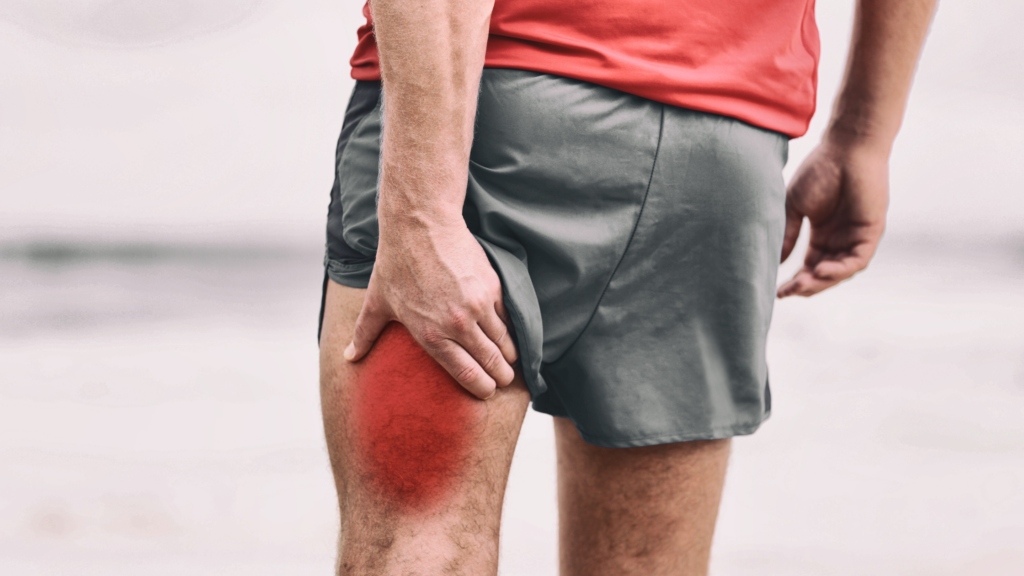How to Combat Delayed Onset Muscle Soreness (DOMS) After Intense Workouts
If you’ve somehow landed on this blog post, congratulations on completing your intense shoulder, ab, or back workout! It’s well-known that exercising regularly is essential for good health and the release of happy hormones. However, along with its benefits comes a common post-workout issue – Delayed Onset Muscle Soreness (DOMS).
DOMS can cause discomfort and hinder your workout routine if not appropriately managed. This article will explore DOMS, why it occurs, and the effective strategies to battle it, ensuring you can stay consistent in your fitness journey.
But First, What is Delayed Onset Muscle Soreness?

This phenomenon refers to the muscle discomfort experienced after an intense workout or physical activity. It usually peaks around 24 to 48 hours after working out and can last up to 72 hours. DOMS is a natural muscle response to foreign movements, increased intensity, or a new exercise routine.
On a more medical note, DOMS transpires due to microscopic tears in the muscle fibers; leading to inflammation and soreness. The affected muscles might feel tender and stiff and experience a reduced range of motion, making it difficult to perform regular activities.

Its Factors and More

Various physiological processes happening within the muscle tissue during and after exercise is therefore attributed to this common sore that fitness junkies are more likely to feel .Some contributing factors to DOMS include:
- Eccentric Movements: Activities that involve lengthening of the muscle under tension, like the lowering phase of a bicep curl or the downward motion of a push-up, are more likely to induce DOMS.
- Lactic Acid Buildup: Contrary to popular belief, DOMS is not primarily caused by lactic acid buildup. Lactic acid typically clears out of the muscles shortly after exercise. However, it can contribute to discomfort during intense workouts.
- Inflammation and Microtears: Intense exercise causes microscopic tears in the muscle fibers, leading to an inflammatory response, which triggers pain signals.
- Metabolic Stress: The accumulation of metabolites and fluid shifts in the muscle cells during exercise can contribute to DOMS.
Saying Goodbye to Post-Workout Muscle Soreness

Now that we understand why DOMS occurs, let’s delve into effective strategies to combat and alleviate the discomfort associated with it:
- Warm-up and Cool-Down: Always start your workouts with a proper warm-up and end with a cool-down session. A warm-up increases blood flow to the muscles and prepares them for the upcoming stress, reducing the risk of severe DOMS. Cool-down exercises, like gentle stretching, can aid in flushing out metabolic waste and promote recovery.
- Gradual Progression: Avoid sudden spikes in the intensity of your workouts. Gradually increase your exercises’ intensity, duration, or complexity to allow your muscles to adapt and minimize the risk of excessive soreness.
- Stay Hydrated: Proper hydration is essential for overall health and can help reduce muscle soreness. Drink adequate water before, during, and after your workouts.
- Incorporate Active Recovery: Engage in light activities on your rest days, such as walking or swimming. Active recovery promotes blood flow to the muscles, aiding repair.
- Massage and Foam Rolling: Massaging your muscles or using a foam roller can help reduce muscle tension and increase blood circulation, easing DOMS symptoms.
- Proper Nutrition: Consume a balanced diet with sufficient protein for muscle repair and recovery. Nutrients like omega-3 fatty acids and antioxidants can also help reduce inflammation.
- Get Enough Rest: Ensure you get adequate sleep each night as it plays a vital role in muscle recovery and overall well-being.
There’s no need to worry if you’re DOMS after an intensified gym session. It’s important to know that it’s common but manageable. By understanding the reasons behind DOMS and adopting effective strategies, you can combat the discomfort and continue to progress in your fitness journey. Do note that it always pays to listen to your body, give it the care it needs, and make exercise a sustainable and enjoyable part of your healthy lifestyle. Remember, consistency is key, and with the right approach, you can achieve your fitness goals while minimizing the impact of DOMS. Stay committed, stay healthy, and stay strong!

